Now here is a personality from the early days of films who did very well out of them – first by starring in many and then financing and producing quite a number of Television series including ‘The Range Rider’ which was very popular here in England in the early fifties.
Another one was ‘Champion The Wonder Horse’
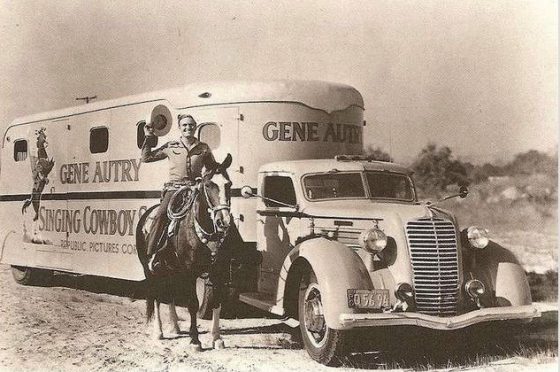
Gene Autry another mode of travel ABOVE and BELOW
A barnstorming flight enthusiast, Gene Autry travelled to many of his performances in his twin-engine Lockheed 10 aircraft.
During World War II, he qualified to fly 16 different Army Air Force aircraft and flew the hazardous supply route over the Himalayas known as “the Hump.” Throughout this time, he also entertained at military shows and volunteered at bond rallies and recruiting drives.

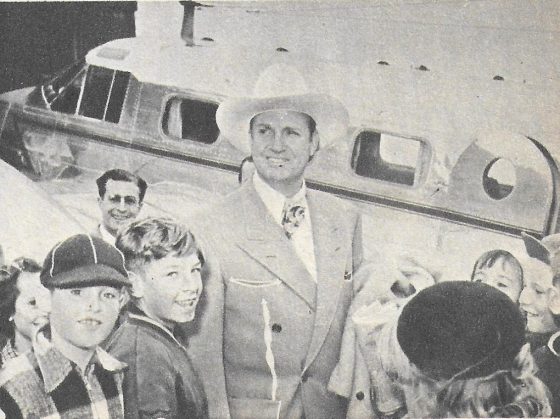
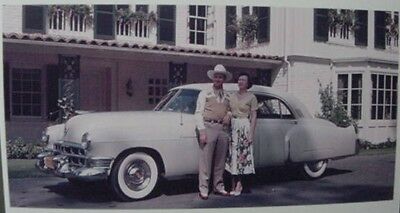
I can’t say that I was ever a fan of Gene Autry but in fairness I can’t even remember seeing any of his films and there were quite a few
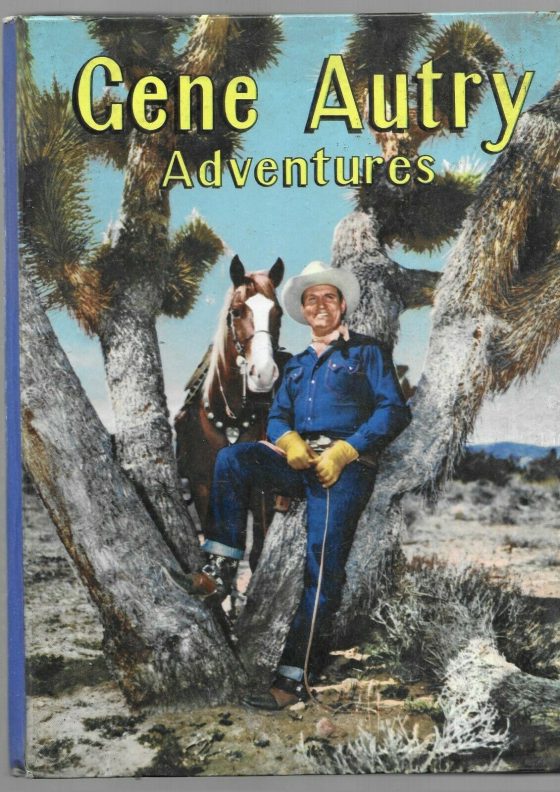
He is the only person to have FIVE stars on the Hollywood Walk of Fame
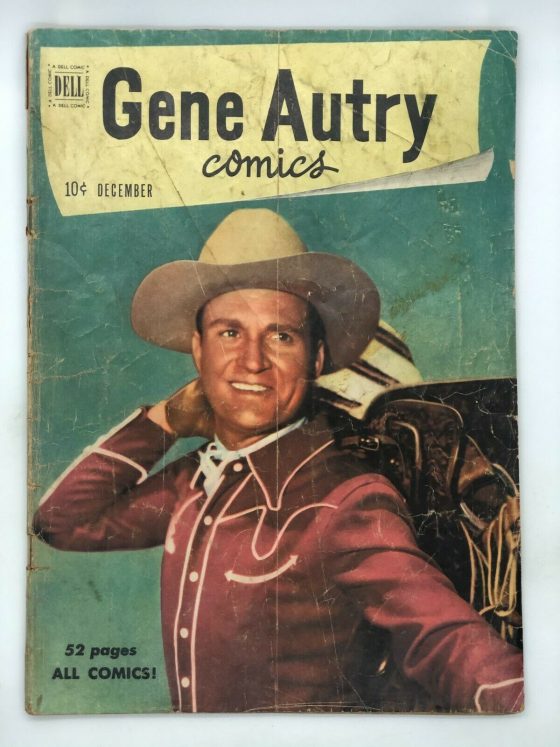
Gene Autry (1907-1998). U.S. Army Air Force WW II. Enlisted 1942. As a pilot and Technical Sgt. he ferried fuel, ammunition, and arms in the China-India-Burma theatre of war.
He also volunteered his talents as an entertainer for numerous Air Force shows. He had his own radio show entitled “Sergeant Gene Autry.” When the war ended, he was reassigned to Special Services where he toured with a USO troupe in the South Pacific until 1946.
His Life Story:
In 1928, Gene Autry had his first big-time audition as a self-taught guitarist and western music singer.
He was so nervous, he flopped.
That only made him determined to get better.
By the time he retired from show biz in 1964, he was headed for unique status in Hollywood.
He would be the only person awarded stars on the Walk of Fame in all five categories: music, live performance, radio, film and TV.
Gene Autry (1907-98) was given the name Orvon upon birth in Tioga, Texas. He spent most of his youth in the Lone Star State and Oklahoma, helping out on his uncle’s farm and working various jobs.
“Even as a boy he took on extra jobs to help support his family and he didn’t mind it, thriving on working hard,” Jackie Autry, his widow, told IBD. “He didn’t have an easy time of it as a youngster, but he was determined to succeed in life.”
In his spare time, he taught himself how to play guitar after ordering one from a Sears, Roebuck catalog at 12. While in high school, he traveled for a few months to provide the opening entertainment for a medicine show.
After leaving school in 1925 to help his family, Autry learned Morse code and served as a telegraph operator for the railroad, keeping himself awake during the midnight shift by strumming the guitar. He got to know dispatcher Jimmy Long, who taught Autry songwriting. Soon they were playing local dances together.
In 1928, Autry took two months off to go to New York City to try to break into the music business.
There, he schmoozed with stars of hillbilly, pop and blues music and learned about music copyrights. He also got an audition with a big producer, who told him he needed to practice for at least six months before coming back.
So back West he went. Autry used a referral letter from the producer to impress radio programmers in Oklahoma while he hired a voice coach, took professional guitar lessons and learned how to yodel like popular western singers.
Taking another break from his telegraphy job, Autry went back to New York in October 1929 to cut test records, which included some of his original songs.
Within weeks, he had commitments to press records with his new stage name, Gene Autry.
His first hit, “That Silver-Haired Daddy of Mine,” co-written with Long, came in 1932 and sold a phenomenal half-million copies.
“Early in his career he saw the value in owning or co-owning copyrights to numerous songs, as well as starting music publishing companies, which built a fortune that continues to yield earnings today,” said Holly George-Warren, author of “Public Cowboy No. 1.”
Moving to Chicago, Autry started multiple radio shows, toured the Midwest to promote his records and built a loyal fan base.
“Gene was quite an avid reader, and during those years when he made so many personal appearances, he would make it a practice to read the local newspapers of the town he was in right down to the want ads so that he could get a good feel for the community,” said Jackie Autry.
Her husband said: “It occurs to me that music, with the possible exception of riding bulls, is the most uncertain way to make a living I know. In either case you can get bucked off, thrown, stepped on, trampled — if you get on at all. At best, it is a short and bumpy ride.”
By that standard Gene Autry was one of the all-time recording rodeo champs, cutting 635 songs, half of them his own or co-written, selling 60 million copies and earning a dozen Gold and Platinum records.
Among his holiday discs were “Here Comes Santa Claus (Right Down Santa Claus Lane),” “Frosty the Snowman” and “Rudolph the Red-Nosed Reindeer,” whose 30 million copies make it the second-best-selling holiday single of all time.
From 1940 to 1956 he had a top radio show, “Gene Autry’s Melody Ranch,” featuring the music, comedy and action of his movies.
Eight years into that run he announced his Cowboy Code, which stated a cowboy must:
• Never take unfair advantage.
• Always tell the truth.
• Be tolerant.
• Be a patriot.
Fans who grew up wanting to emulate him included future music stars Johnny Cash and James Taylor.
The gospel of goodness that Autry preached was a projection of the real man, said his widow: “Everyone in the entertainment business came to know that if you had a handshake from Gene, it was a done deal. No paperwork required.”
Autry’s lesson is to develop a positive reputation and make sure everything you do is aligned with the values behind that.
Autry’s first Western movie was “In Old Santa Fe” in 1934. He was soon a B-movie innovator, bringing cars and planes into the genre.
With his vast touring supporting the popularity of his films, theater owners voted him their No. 1 star in 1937. By then he was receiving 40,000 fan letters a month.
His film plots usually had him capturing bad guys and interspersing action with singing. Some of his movies were even based on his records, such as “South of the Border” and “Back in the Saddle.”
His film producer refused to pay the expense of answering mail, so he hired assistants to help his secretary send autographed photos.
Three years later, Autry was the fourth-biggest box office attraction, behind just Mickey Rooney, Clark Gable and Spencer Tracy.
As the Great Depression took its toll, Gene Autry broadcast optimistic messages about America’s economic future. He promoted everything from Western tourism to trade with Latin America, according to Michael Duchemin, former senior curator at the Autry National Center and now director of the Chinese American Museum in Los Angeles.
“As a small entrepreneur selling cultural products in global markets, Autry knew something about the international economy,” said Duchemin. “He became a national icon as he incorporated these messages. His most significant support was to shape public opinion to favor war preparedness, and he starred in films like ‘Mexicali Rose’ and ‘In Old Monterey’ with that message.”
With America fighting in World War II, Autry joined the Army Air Corps in July 1942. His service salary was $114 a month, although he would report earnings that year of $432,000, worth $6 million today.
His job in uniform involved recruiting drives, entertaining troops and promoting war bonds. After his service ended in June 1943, he starred in overseas USO shows.
Now back in his cowboy suit, he continued to shoot Westerns, but as they faded in popularity he decided to make the last of his 93 feature films in 1953.
By then he had shifted to the new medium of TV. In 1950 the first of the 91 episodes of CBS’ “The Gene Autry Show” was on the air. He also produced other popular programs, including “Annie Oakley.”
“He was the first major movie star to star in a television series,” George-Warren said. “He was the first star to create his own production company. He became a merchandising entrepreneur in the 1930s, licensing his name and image to hundreds of products, including comic books and breakfast cereal.”
Autry’s lesson is to extend your brand by making it appeal to different audiences. Such as:
• Rodeo. Gene Autry rode that way with his World Championship Rodeo Co., which furnished livestock for the sport. He began as a partner in 1942 and became sole owner in 1956, operating on a 24,000-acre ranch in Colorado.
• Baseball. A huge fan, he tried to strike a deal in 1961 to broadcast games of the American League’s new Los Angeles Angels over one of the radio stations he owned.
Baseball executives were so impressed, they persuaded him to become owner of the team.
By 1966, the renamed California Angels were playing down the road in Anaheim. In 1996 he sold controlling interest to Walt Disney Co.
“It was a delight to see him sign baseballs at Anaheim Stadium and chat with fans while dressed in his cowboy suit,” said R.L. Wilson, whose “Colt: An American Legend” is dedicated to the Autrys. “Gene never forgot his humble origins and was beloved of all.”
In 1988, the Gene Autry Western Heritage Museum opened in Los Angeles to exhibit and interpret the heritage of the West and show how it influenced America and the world. In 2003, it was merged with the Southwest Museum of the American Indian and the Women of the West Museum, thereby creating the Autry National Centre
“Of his many triumphs, the National Centre is his most lasting,” said Wilson, who served on its board of trustees. “With over 500,000 items, some of its collections are the best that exist, whether public or private.”
Near his death at 91, Autry’s net worth was estimated by Forbes magazine at $320 million.
Place your comment